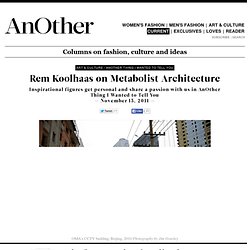

To be an architect or not to be. María nos hizo la siguiente petición en ¿qué es lo que te interesa?

“Un consejo para todos esos estudiantes que están ahora mismo en la escuela y/o a punto de salir…” Iremos más allá de un consejo y intentaremos responder a la siguiente pregunta ¿Qué posibilidades tiene un arquitecto recién terminada la carrera? La primera pregunta que tiene que hacerse tiene que ver mucho con el título de esta entrada. ¿Ser el arquitecto que me han enseñado a ser o no serlo? La pregunta se las trae, por la complejidad que ahora mismo tiene su respuesta. Un soneto me manda hacer Violante, que en mi vida me he visto en tal aprieto; catorce versos dicen que es soneto: burla burlando van los tres delante.
Intentaré ser lo más claro y ordenado que pueda. Formación y cambio de paradigma. La formación que se da a un arquitecto en las escuelas tiene un tremendo problema de enfoque debido a que se centra en la Arquitectura sin tener en cuenta a la sociedad en la que el arquitecto debe trabajar. Infinitas. Conclusión. The Eames Studio's Inspiring History And Unknown Dark Side. "Was he an architect?

A designer? A filmmaker? " asks one of the interviewees in the new documentary Eames: The Architect and the Painter. Charles Eames was all and none of those things at once-- and the same could be said for his wife and collaborator Ray (described in the film as "a painter who rarely painted"). What they were, as that interviewee concludes, was "something we all wanted to be. " The Googles and Apples of their day flocked to hire them, too: Boeing, IBM, Polaroid. The film, directed by Jason Cohn and Bill Jersey, covers all of the Eameses’ greatest hits with aplomb. But The Architect and the Painter is hardly a hagiography, and Cohn and Jersey’s willingness to probe the Eameses’ (especially Charles’s) less-than-saintly habits gives the film an unexpected edge.
All the same, one can’t watch this film without feeling inspired by the apparently limitless creativity that the Eames Office injected into postwar American culture. AnOther Thing I Wanted to Tell You - Rem Koolhaas on Metabolist Architecture. "In the 1960s and 70s, the media discovered the Japanese Metabolist architects, gave them an incredibly significant platform and increased their aura.

I am a little jealous as this happened at a time when there wasn’t any resentment or caricature. We are now “star” architects, which has become a horrible condition, because it means we get more attention but are taken less seriously. Metabolism occurred at a moment when the denigration that comes with celebrity was not yet operating. The Metabolists were not a group of individual architects, but a movement that was orchestrated, and to some extent invented, by the state.
The Japanese state in 1960 needed to present a local avant-garde branch of modernism to the world. The Metabolists were a group of people who maintained an incredible intimacy and intensity of relationship over a 50-year period. "We are now 'star' architects, which has become a horrible condition, because it means we get more attention but are taken less seriously"
Juan freire. Juan freire: Territorio = geología x infraestructuras x política. [Estas ideas son una introducción a un texto más largo sobre nuevos conceptos y modelos de ciudad y territorio en los que estoy trabajando en estos momentos] La configuración urbana y territorial surge de una interacción compleja entre dos factores: geología y geografía por una parte y política (o urbanismo y ordenación territorial) por otra.

Esta interacción no es lineal ni genera casi nunca los resultados planificados desde el urbanismo. Tampoco estos dos factores deberían asimilarse a lo natural y lo humano. En realidad la geología de un territorio se compone de estructuras naturales (lo que podríamos denominar infraestructuras ambientales) y de una geología “construida”, en particular las infraestructuras artificiales. La política trabaja sobre la geología natural y construida, pero a su vez la geología moldea los resultados efectivos de las estrategias políticas. . [1] Varnelis, Kazys (ed.) (2009). Ciudades para un Futuro más Sostenible. Perec, Georges - Especies de Espacios. The Situationist International Text Library. Los diez mandamientos de Mickey Mouse.